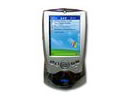'ZDNET Recommends': What exactly does it mean?
ZDNET's recommendations are based on many hours of testing, research, and comparison shopping. We gather data from the best available sources, including vendor and retailer listings as well as other relevant and independent reviews sites. And we pore over customer reviews to find out what matters to real people who already own and use the products and services we’re assessing.
When you click through from our site to a retailer and buy a product or service, we may earn affiliate commissions. This helps support our work, but does not affect what we cover or how, and it does not affect the price you pay. Neither ZDNET nor the author are compensated for these independent reviews. Indeed, we follow strict guidelines that ensure our editorial content is never influenced by advertisers.
ZDNET's editorial team writes on behalf of you, our reader. Our goal is to deliver the most accurate information and the most knowledgeable advice possible in order to help you make smarter buying decisions on tech gear and a wide array of products and services. Our editors thoroughly review and fact-check every article to ensure that our content meets the highest standards. If we have made an error or published misleading information, we will correct or clarify the article. If you see inaccuracies in our content, please report the mistake via this form.
Dell Axim X5


Dell Axim X5
pros and cons
- Inexpensive
- outstanding battery life
- removable Li-ion battery
- snazzy cradle includes extra battery charger
- packed with features, including both SD/MMC and CompactFlash slots.
- Fairly bulky.
Until recently, one of the main criticisms of Pocket PCs was their high price. But this is not the case with Dell's Axim X5, which will be available in early February at £229 (ex. VAT; £269.08 inc. VAT) for a 400MHz version; an even more affordable 300MHz version will cost just £169 (ex. VAT; £198.58 inc. VAT). Impressively, both identical-looking handhelds are also well stocked with features, the top-end 400MHz version including a docking cradle. The Axim X5's one shortcoming is its size: this isn't the sleekest or the most compact Pocket PC that you'll find. But for the price, Dell's first Pocket PC is very enticing.
Design
Equipped with a 400MHz XScale processor, 48MB of ROM and 64MB of RAM, the Axim X5 has plenty of processing power and storage available. On top of that, the unit bristles with ports and slots. However, all those components make the X5 a bit bulky -- the unit measures a healthy 8.15cm by 12.8cm by 1.8cm and weighs in at 196g. This handheld is too large to slip easily into most pockets, especially when stowed in its protective case.
The 16-bit (65,536-colour) transflective display measures 3.5in. diagonally and offers the standard 320 by 240 pixel resolution. You can navigate the Axim X5's menus via the five-way button below the screen or using a scroll dial on the unit's side. Power users will appreciate the fact that both CompactFlash Type II and Secure Digital (SD)/MultiMedia Memory (MMC) card slots are provided, and that the Li-ion battery is not only rechargeable but also removable. A rechargeable backup battery safeguards against data loss while you're switching out the main cell.
A few features differentiate this Dell from its competitors. The sides of the handheld have rubber strips, making the unit easy to grip, and the record and reset buttons actually reside beneath the rubber. Two rubber feet on the back of the Axim keep it from sliding around when it's placed flat on a desk or a table. The unit's aluminium stylus has an attractive flattened design, although it's a bit awkward to use at first.
The Axim X5's futuristic docking cradle gives the device a bit of pizzazz. When the device is in its cradle, a blue Dell logo shines from behind its semi-transparent, silvery surface. But the cradle doesn't put form over function: it recharges the handheld and connects to a PC via a USB cable, just as you'd expect. The cradle can also accommodate the Axim X5 with a higher-capacity battery installed, and it has a second slot for charging up a spare battery. A separate USB cable is provided for syncing the unit independently of the cradle.
Features
Internally, the Axim X5 resembles many of its competitors. Its 400MHz processor, 48MB of ROM and 64MB of RAM are par for the course in the latest Pocket PCs. Likewise, the unit's 3.5in. TFT display and Pocket PC 2002 operating system are standard.
There's actually nothing special about any of the X5's other hardware features, except for the fact that there are so many of them. As mentioned above, the unit has both CompactFlash and SD/MMC expansion slots. And although the X5 doesn't include cutting-edge technology such as built-in Bluetooth or Wi-Fi, the dual slots provide two different ways to add memory or peripherals.
Dell has a range of peripherals in the works, too. More mundane add-ons include fancier protective cases; two different kinds of keyboards; screen protectors; and extra styli, cables, cords and cradles. For expansion, you can expect CompactFlash and SD memory add-ons, Bluetooth and Wi-Fi cards, as well as a higher-capacity battery.
On the software side, Dell keeps it simple with a minimal package, but includes a couple of tailor-made programs. Home is simply a file-explorer-style program prettified with a bubble motif. The Switcher Bar puts a small tray of three icons onto the top bar of the screen: one gives you quick access to battery information; another takes you to screen-brightness and backlight settings; and the third activates a drop-down menu that lets you view all running programs, switch among them and close any or all of them with a single tap.
Along with Microsoft Outlook 2000 and ActiveSync 3.5, the software CD includes a bunch of different programs to add to your Axim X5. A closer look reveals that most of these applications are either already installed or are demo/trial versions. However, you do get a PowerPoint viewer called IA Presenter and Resco Picture Viewer, which are nice bonuses.
Performance
Across the categories of processor, sound, screen and battery, the Axim X5's performance ranged from satisfactory to outstanding.
Considering that the X5 has a 400MHz processor, we expected better performance than we got, although many programs have yet to be optimised for this CPU. For example, playing Hexacto Bounty Hunter 2099 Pinball was frustrating: the system would occasionally pause for a split second, and the ball would suddenly appear elsewhere on the screen -- usually heading for the drain. Using PocketTV, the X5 played back MPEG video smoothly, except for fast-action scenes, where it dropped frames. However, the device had no problem juggling multiple programs and switching among them with minimal lag time.
The Axim X5 has a 16-bit colour, 240-by-320-pixel resolution screen. Beyond the specifications, we found the display to be bright, pleasing and easy on the eyes. The screen doesn't have very high viewing angles, but the colour and the brightness are uniform.
Battery life is the Axim X5's particular strength -- Dell rates it at 8 - 10 hours, and we were amazed at how long the cell held up in our tests. Using Microsoft Media Player with the screen set to halfway bright, the X5 played MP3s for 6 hours -- 22 minutes before the music cut off. However, the battery still had 16 percent of its charge left, and even though the unit could no longer play tunes, it lasted another hour before shutting down. The total battery life added up to only about 40 minutes shy of Dell's rated time.